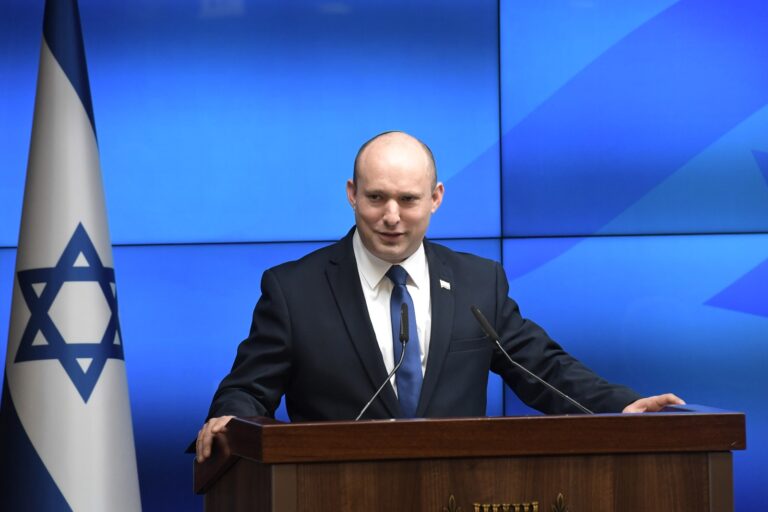 Panama has quietly been part of yet another revolution “south of the border”. This time there were no coups and no armed insurrections but a revolution in the way emergency medical services are being provided in Panama and other countries in Central and South America. Frustrated by traffic and road conditions that often lead to ambulance response times of 15-30 minutes or more. Panamanians Ramon Gateno and Isaac Serfaty were looking for a better solution. Familiar with Israel’s creative and often audacious solutions to technical problems they began to do some research in Israel. They were intrigued by the emergency medicine solutions provided by United Hatzalah of Israel and wondered if it would work in Panama. After months of planning, training and testing United Hatzalah of Panama was launched.
Panama has quietly been part of yet another revolution “south of the border”. This time there were no coups and no armed insurrections but a revolution in the way emergency medical services are being provided in Panama and other countries in Central and South America. Frustrated by traffic and road conditions that often lead to ambulance response times of 15-30 minutes or more. Panamanians Ramon Gateno and Isaac Serfaty were looking for a better solution. Familiar with Israel’s creative and often audacious solutions to technical problems they began to do some research in Israel. They were intrigued by the emergency medicine solutions provided by United Hatzalah of Israel and wondered if it would work in Panama. After months of planning, training and testing United Hatzalah of Panama was launched.
Soon the orange-vest-clad volunteers, such a common sight in Israel, began to appear on the scene of emergencies in Panama. As the group began to grow and the scope of the emergencies that they were exposed to, began to expand they realized that they needed to “up their game” to the next level. Ramon, Isaac and an elite group of leading medics journeyed back to Israel to enhance their knowledge base and test their mettle against the most rigorous training scenarios. The crash course was a combination of intense classroom study by the finest instructors of United Hatzalah coupled with real-life exposure through “shotgun” ride-alongs with United Hatzalah ambucycles and ambulances. The course also provided the team with training and exposure to the broadest and most intense forms of medical response in Israel. They observed the practice of combat medicine at the IDF’s elite BAHAD 10 medical training base. They entered the hyper-realistic computerized combat simulation center. The flashes of simulated explosions merged with the ear-splitting sounds of a combat soundtrack. Smoke, cries of the wounded and fake blood combined to create a truly unsettlingly intense environment to attempt to save lives. The after-event briefing was almost as brutal as the simulated combat. A wise combat instructor informed them “when the training is hard, the reality is easier”.
In Israel, the home front is often the front-lines and in Jerusalem, Hadassah Ein Kerem is at the forefront of any incident or conflict. United Hatzalah’s Medical Director Professor Avi Rivkind is the head of the Level 1 trauma unit and has spearheaded many of the cutting edge advances in trauma treatment in Israel. It was here that the team from United Hatzalah of Panama learned about the critical triage system utilized at Hadassah that separates the ambulatory from those going to ER, surgery or the trauma unit. The team then moved on to learn how TEREM revolutionized primary care in Israel. At the flagship Romema branch they were guided by newly-minted nurse Shayna Applebaum, daughter of the legendary founder of TEREM, Dr. David Applebaum. Dr. Applebaum was killed along with his eldest daughter Naavah on the eve of her wedding in a terror attack. The resilience and devotion of the Applebaum family provided the team with a lesson that they will not soon forget.
Late night shifts on United Hatzalah ambucycles and ambulances merged with the pre-dawn excursion to the Judean desert with the United Hatzalah-affiliated Megillot Search and Rescue (SAR) unit. The team learned the finer points of safe off-road driving, rescue rappelling and packaging a patient for rough terrain and/or helicopter evacuation. In contrast to the austere desert environment the group spent a day at the ultra-hi-tech MSR medical simulation center at Tel Hashomer Medical Center. There they had to treat computer controlled mannequins that were able to fully mimic a live patient. The patients talked/moaned, had pulses, breath sounds and movements. Mistakes in this challenging environment would lead to virtual death but a restart of the training scenario would make it all better, something not possible in the real world. The closest the training came to the real world was the final Mass Casualty Incident (MCI) training event with fully moulaged live patients, pyrotechnics, sirens and actual vehicles and equipment in the Aminadav Forest. United Hatzalah medics filled in as actors creating an intense stress-inducing environment modelled after the numerous terror attacks and MCI’s that United Hatzalah medics know all too well.
Eli Beer, founder of United Hatzalah addressed his Panamanian counterparts with a message and a mission “You must take the lessons learned here back to Panama and not only use it to save more lives but use it to teach and inspire others to save more lives”. Mr. Mark Gerson, Chairman of the International Board of United Hatzalah inspired the medics from Panama with his message “Interest is growing in the United Hatzalah model from Jersey City to Chennai India and dozens of locations around the world.” Ramon Gateno expressed his appreciation on behalf of the entire unit and his confidence that the Panamanian unit will continue to grow and be a beacon to other medical units in the region.





















(YWN World Headquarters – NYC)










